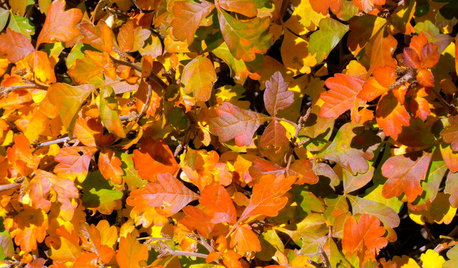Newbie with new lawn - Overseeding?
16 years ago
Related Stories

EARTH DAYThe Case for Losing the Traditional Lawn
Work less, help the environment and foster connections by just saying no to typical turf
Full Story
MOST POPULARMeet a Lawn Alternative That Works Wonders
Carex can replace turfgrass in any spot, is low maintenance and adjusts easily. Add its good looks and you’ve got a ground cover winner
Full Story
GARDENING GUIDESHow to Fix Bare and Yellow Lawn Spots
Restore your turf’s good looks by reseeding unsightly patches
Full Story
GRASSESHow to Rock a Lawn
Weekend Project: The key to healthy grass begins with the soil. If turf works for you, here’s how to fix it and keep it looking its best
Full Story
LIFEThe Top 5 Ways to Save Water at Home
Get on the fast track to preserving a valuable resource and saving money too with these smart, effective strategies
Full Story
GARDENING GUIDESGarden Myths to Debunk as You Dig This Fall and Rest Over Winter
Termites hate wood mulch, don’t amend soil for trees, avoid gravel in planters — and more nuggets of garden wisdom
Full Story
GARDENING GUIDES10 Tips for Beginning Gardeners
With a simple sketch, basic tools and the right plants, you’ll be on your way to growing your first flowers or edibles
Full Story
GARDENING GUIDESSouthwest Gardener's November Checklist
How to get your arid-region garden in shape for the season of outdoor living
Full Story
COMMUNITY15 Ways to Make Your Neighborhood Better
Does your community lack ... well, a sense of community? Here's how to strengthen that neighborly spirit
Full Story
GARDENING GUIDESInvite Cellophane Bees to Your Garden by Providing Patches of Bare Soil
Look for cellophane bees (Colletes) pollinating flowering trees and shrubs in U.S. gardens this spring
Full Story








billhill
hou30Original Author
Related Professionals
Ashland Landscape Architects & Landscape Designers · Clemson Landscape Architects & Landscape Designers · Fitchburg Landscape Architects & Landscape Designers · Fort Lee Landscape Architects & Landscape Designers · Simi Valley Landscape Architects & Landscape Designers · South Elgin Landscape Architects & Landscape Designers · Cary Landscape Contractors · East Chicago Landscape Contractors · Maywood Landscape Contractors · Riverhead Landscape Contractors · Rochester Landscape Contractors · Tigard Landscape Contractors · Washington Landscape Contractors · Denton Swimming Pool Builders · Tampa Swimming Pool Buildersbillhill
Billl
philes21
parafly9
dlenart
philes21
hou30Original Author
hou30Original Author
philes21
User